Старший научный сотрудник Института всеобщей истории РАН.
Ист.: Scripta antique. Вопросы древней истории, филологии, искусства и материальной культуры: альманах. Том X. 2022. Москва: Собрание, 2022.
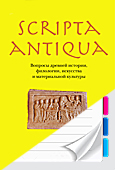
Scripta antiqua. Вопросы древней истории, филологии, искусства и материальной культуры. Том IX. 2021. Москва: Собрание, 2021. С. 48-60.
Статья посвящена применению среднеассирийскими монархами практики величания своих предшественников задним числом теми титулами, которых они в действительности не носили (как с присвоением им более высоких титулов, чем реальные, так и с купированием реальных титулов в пользу более скромных). Автор показывает, что эта практика применялась для решения двух задач: ретроспективного повышения статуса всех предшествующих ашшурских правителей до царского (с целью подкрепления действующего института царской власти) и их неформального ранжирования - градуируюших понижающих либо повышающих модификаций ранга избранных предшественников в рамках царского статуса (или с выходом за эти рамки), передающих отношение к ним правящего монарха и исторической традиции).
A.A.Nemirovsky (Moscow). RETROSPECTIVE TITLING AS A WAY OF GRADING THE RULER STATUS IN THE MIDDLE ASSYRIAN MONARCHY
The work deals with the use by the Middle Assyrian monarchs of the practice of naming their predecessors retroactively with those titles that they had not actually used (both with the assignment of higher titles to them than real ones, and with the suppression of real titles in favor of more modest ones). The author shows that this practice was used to achieve two aims: retrospective promotion of all previous Assyrian rulers up to the royal rank (with the aim of reinforcing the current institution of royal power) and their informal ranking (graduated decreasing or increasing modifications of the rank of selected predecessors within the framework of the royal status or even beyond the latter), conveying the attitude to them from the side of the ruling monarch and historical tradition.
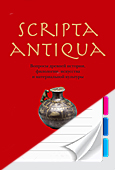
Scripta antiqua. Вопросы древней истории, филологии, искусства и материальной культуры. Том X. 2022. Москва: Собрание, 2022. С. 35-55.
В статье рассматриваются вероятные случаи выражения в некоторых ассирийских источниках или источниках, восходящих, как стремится показать автор, к ассирийской традиции, представлений о том или ином ассирийском правителе середины - третьей четверти II тыс. до н.э. как об основателе ассирийского великодержавна или зачинателе движения к нему. По мнению автора, при Ашшуру- баллите I (XIV в. до н.э.) роль такого «начинателя» приписывалась, видимо, Пузур-Ашшуру III (ок. 1500 г. до н.э.), при Ададнернари I (начало XIII в. до н.э.) и позднее - самому Ашшурубаллиту I, а еще позже - самому Ададнерари I. Привлекается известная по греческим передачам легендарная традиция о Нине и Семипамиде; раннюю, до-Ктесиеву форму этой традиции автор реконструирует как предание об основателе ассирийского великодержавия «Нине», через несколько веков после которого в Ассирии правила царица Семирамида, действовавшая при своем сыне - тезке первого Нина, «Нине/Нинии». В этом предании автор видит преображенную форму ближе неизвестной ассирийской традиции о царях-тезках - Ададнерари I и Ададнерари III, сыне и современнике деятельности ассирийской царицы Саммурамат (resp. Семирамиде).
A.A.Nemirovsky. SOME CONSIDERATIONS ON THE INFORMAL STATUS OF THE «FOUNDER OF THE GREAT HOWER» AMONG THE MIDDLE ASSYRIAN RULERS AND SOME MEANS OF ITS EXPRESSION
The article discusses several probable cases when certain Assyrian sources (or the sources, which, as the author seeks to show, derivate from the Assyrian tradition) express perception of a particular Assyrian ruler of the 2nd millennium BC. as the founder of the Assyrian great power or the initiator of the movement towards it. According to the author, under Ashuruballit I (XIV century BC), the role of such a “initiator” was apparently attributed to Puzur-Ashur III (c. 1500 BC), while under Adadnarari I (beginning of the XIII century BC) and later it was ascribed to Ashuruballit I himself, and in even later times - to Adadnarari I himself. The legendary tradition about Ninos and Semiramis, known from Greek narratives, is touched; the author reconstructs its pre-Ctesian form as a legend about “Ninos” as the founder of the Assyrian great power, several centuries after which “Ninos” Assyria was ruled by Queen Semiramis who acted under her son - the namesake of the first Ninos; in this legend, the author sees a transformed form of some Assyrian reminiscences about the namesake kings - Adadnarari I and Adadnarari III, the latter of whom was the son and contemporary of the activities of Assyrian Queen Sammu-ramat (resp. Semiramis).
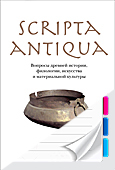
Scripta antiqua. Вопросы древней истории, филологии, искусства и материальной культуры. Том VIII. 2020. Москва: Собрание, 2020. С. 62-95.
Статья посвящена публикации оттиска староассирийской печати из Кюль-тепе, несущего крайне редкую для переднеазиатского изобразительного искусства сцену борьбы героя со змееморфным чудовищем (по-видимому, двуглавым змеем). Печать относится к числу немногочисленных высоко оригинальных артефактов из Кюль-тепе (большинство печатей оттуда несет, напротив, мотивы, многократно повторяющиеся на других печатях из самого Кюль-тепе и иных центров). Такая интерпретация сюжета детально подтверждается фотографиями и находит ряд аналогий в глиптике и на иных артефактах клинописных культур III-I тыс., существовавших в месопотамском и сиро-анатолийском регионах. Ближайшие аналогии змею на оттиске представляет, по-видимому, змей на позднехеттском рельефе из Малатии, что позволяет говорить о существенной роли анатолийских представлений в формировании композиции, представленный на печати. Вопрос о конкретном змееборческом мифе, переданном этой композиции, остается открытым.
A.A.Nemirovsky, V.Yu.Shelestin, A.A.Yasenovskaya (Moscow). SCENE OF STRUGGLE WITH DRAGON-LIKE DEMONIC PERSONAGE ON THE STAMP OF OLD-ASSYRIAN PERIOD FROM THE COLLECTION OF PUSHKIN-MUSEUM (I 2 Б 1591).
The paper presents publication of an old Assyrian seal print from Kultepe carrying a scene of a hero’s struggle with a serpent-like monster (apparently two-headed one), which is extremely rare for the Anciemt Near Eastern art. The composition is one of the few highly original ones from Kultepe (most of the seals found there bear, on the contrary, motifs repeated many times on other seals of this place and times). Our interpretation of seal print in question is confirmed in detail by its photographs and has a number of analogies in the glyptic and other artifacts of cuneiform cultures of the Mesopotamian and Syro-Anatolian regions in the 3rd - 1st Mills BC. The closest analogy to the serpent on our seak print is apparently a serpent (apparently two-headed) on the Late Hittite relief from Malatia, which fact allows us to trace a significant role of Anatolian traditions in the formation of the composition presented on our seal. The question of the specific myth reflected in this composition remains open for now.
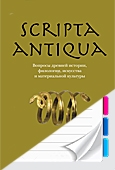
Scripta antique. Вопросы древней истории, филологии, искусства и материальной культуры. Том V. 2016. Москва: Собрание, 2016. С. 132–166.
На основании анализа многочисленных фольклорных паралллелей к новоегипетской Сказке об Апопи и Секененра и ее сохранившегося начала автор приходит к следующим выводам: независимо от участи реального Секененра (который едва ли погиб в бою с гиксосами Авариса), сюжет Сказки не был связан с фиванско-гиксосскими войнами и должен был включать мирное разрешение взаимодействия Апопи и Секененра благодаря хитроумному ответу фиванской стороны (подобному ответам Эзопа и Ахикара в аналогичных фольклорных сюжетах); этот ответ должен был, по-видимому, предложить некий социально «умаленный» персонаж при некоем участии Амона-Ра.
A.A.Nemirovsky (Moscow). TALE OF
APOPHIS AND SEQENENRE: THE PROBLEM OF PLOT ENDING AND INTERPRETATION
Late New Kingdom Tale about Apophis and Seqenenre in spite of several new special treatments (e.g., the works by A.Paulet, C. Di BiaseDyson, C.Manassa, A.Banschikova and our own ones) still proposes the same main puzzles for researchers as earlier: 1) why both antagonists, the Hyksos and the Theban ones, are titled and described in the Tale as legitimate kings of Egypt (nsw), thus being presented as executing this office simultaniously; 2) Apophis is presented as “alien” and impious ruler (and the very fact of his separate Hyksos kingship in Egypt is attested as “disaster” for Egypt) and Seqenenre – as “our own” and pious one, thus occupying negative and positive poles of their opposition; why then Seqenenre is described as a weak, humble and helpless person in the face of Apophis’ challenge? Does it mean that the Tale was a kind of burlesque parody? 3) Could the lost ending of the Tale have any connotations with Theban “liberation war(s)” against Hyksos rule, and did Seqenenre conduct such a war in real history (as it is often supposed due to deadly wounds seen on his mummy)? The present paper re-studies this questions using among other data the comparison with 16 tales and legends where a powerful “alien” king deliberately challenges a weaker king who represents “our own” side with inexecutable or absurd demands: three Korean folk-tales, Indian tales of 922 *G type, Buddhist legend of a King who deported old aged citizens, Egyptian tale of Setna Khaemwaset and Sa-Osiris (Setna II), tale of Amasis and Ethiopian King (Plut. Sept. sap. 6), Arabian Nights tale of Jali’ad and Shimas, The Legend of Queen of Sheba giving riddles to Solomon (1 K. 10, 2 Ch. 9), Phoenician legend of riddling in between Solomon and Hiram of Tyre, Russian folk-tale Afanasyev 322, Persian legend in “Chatrang-namak” about origin of chess playing, Avestan and Sassanian legends of Yoishta Friyan, and especially an episode from The Aesop Romance and Aramaean Tale of Ahiqar, in both of which the mighter king complains, just as in the Tale of Apophis and Seqenenre, that he is troubled by the roar of some beasts in his far counterpartner’s city. Our conclusions are as follows. The Tale of Apophis and Seqenenre belongs to the same folktale type as stories listed above; it is a literary composition using the corresponding folkore plot, neither a parody nor some belletrized “introduction” in Theban-Hyksos wars. The combination of (1) solidarity with “our own” king as a representator of “our side” and often a positive hero and (2) the weakness and unheroic behaviour of ther same king, which is present so obviously in our Tale, is just typical for the folktale type in discussion. The ending of the story, as it is presumed by this folktale type and by recognizing Apophis as nsw in our Tale, had to be a peaceful and appeasing success of “our own” Theban side; some witty answer(s) (like those ones of Aesop and Ahiqar) had to turn Hyksos king to become more respectful to Thebans and to recognize the great powers of Re. Historical considerations make it not very probable that Seqenenre was killed in battle against Avaris rulers and not by some other enemies (Kushite, or Libyan, or local Egyptian ones, including so called “lesser Hyksos”, i.e. Asiatics ruling in some Egyptian localities; or, at last, by mutineers or conspirators), but in any case his violent death hardly could have been used or referred to in our Tale. Apophis of the Tale is more probaby Aaqenenre than Awoserre (for some reasons we think that three various prenomens combining with nomen of Apophis belong to three different kings of this nomen, as it was thought once, and not to one king who had twice changed his prenomen).
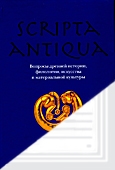
Scripta antique. Вопросы древней истории, филологии, искусства и материальной культуры. Том II. 2012. Москва: Собрание, 2012. С. 209–237.